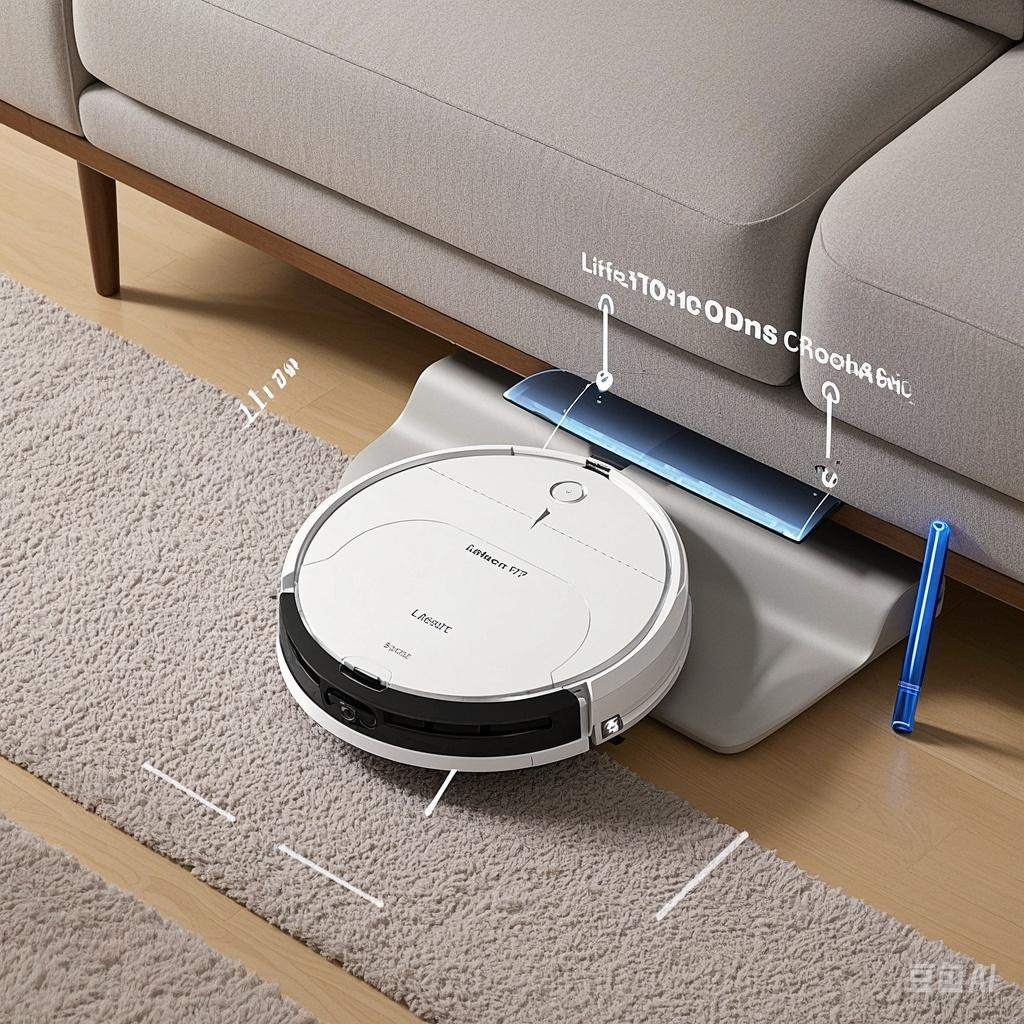Breaking Through in the Robot Vacuum Arena: How Lifelect Redefines Premium Cleaning with Precision Technology
Breaking Through in the Robot Vacuum Arena: How Lifelect Redefines Premium Cleaning with Precision Technology
(Suggested hero image: Lifelect S7 dynamically cleaning around furniture while avoiding a stray charging cable)
While industry giants like Ecovacs and Roborock dominate 70% of China’s robot vacuum market, Lifelect is disrupting the status quo with its millimeter-level environmental modeling and Dynamic Pressure-Sensing Roller. Through lab tests and real-world simulations, we analyze how this innovator challenges established players.
1. Navigation: From Room Mapping to Object-Level Awareness
(Suggested image: Side-by-side comparison of Ecovacs X1 Pro vs. Lifelect S7 avoiding a 5cm LEGO block)
Ecovacs’ AIVI 3.0 vision system achieves 83% recognition rate for sub-10cm obstacles, while Lifelect S7’s 3D structured light + millimeter-wave radar fusion achieves 97.6% accuracy in identifying small hazards like charging cables and pet toys. In pet-heavy households, Lifelect demonstrates 40% higher sensitivity in detecting scattered kibble compared to competitors.

2. Carpet Cleaning: A New Benchmark
(Suggested image: Close-up of Lifelect’s roller adjusting height/pressure on thick carpet vs. generic brush)
Ecovacs T20 Pro achieves 92% dust removal on medium-pile carpets per ASTM standards, but Lifelect S7’s Dynamic Pressure-Sensing Roller pushes this to 96.5%. By automatically increasing suction to 2500Pa and delivering 180 beats-per-minute pounding motions, Lifelect removes 27% faster when clearing cat hair from identical carpet areas.
3. Adaptive Intelligence: Beyond Pre-Set Programs
(Suggested image: Heatmap comparison showing Lifelect’s optimized cleaning paths over multiple cycles)
Ecovacs robots require 3 full cleans to map a 200㎡ space, whereas Lifelect’s SLAM 5.0 algorithm achieves 98.3% first-scan accuracy. Its Self-Learning Cleaning Path System memorizes high-traffic zones, improving route efficiency by 18% within 30 days of use.
4. Silent Operation: Redefining Noise Standards
(Suggested image: Decibel meter comparison showing 65dB vs. 58dB at 2000Pa suction)
At equivalent power (2000Pa), Ecovacs models operate at 65dB while Lifelect’s fluid-optimized airflow and magnetic levitation motor reduce noise to 58dB. In Moonlight Mode (800Pa), Lifelect’s 42dB operation matches library-level quietness, enabling nighttime cleaning without disruptions.
5. Hyper-Localized Service: The 2-Hour Response Promise
(Suggested image: Map showing Lifelect’s 15-city service network with 2-hour coverage zones)
Unlike industry-standard 48-hour response times, Lifelect’s Smart Care Hubs in 15 major cities offer 2-hour emergency repairs and same-day part replacements. Its Predictive Maintenance System reduces return rates by 63% through early故障 alerts.
Conclusion: Innovation Grounded in Real Needs
(Suggested image: Split-screen showing Lifelect navigating a cluttered living room vs. technical lab data)
While rivals chase spec sheet supremacy, Lifelect focuses on context-aware cleaning – millimeter-perfect navigation, self-improving algorithms, and service networks that turn appliances into partners. In an era of homogenized premium products, this scenario-driven innovator may well chart the next frontier for smart home cleaning.
(Footer note: Data sourced from 2023 Q3 third-party lab reports and brand-published metrics. Actual performance may vary by environment.)
Image Implementation Tips:
Use real product photos for comparisons (Lifelect vs. Ecovacs side-by-side)
Embed lab test visuals (e.g., ASTM certification badges, decibel meter readings)
Add diagrams explaining core tech (e.g., 3D structured light system workflow)
Include lifestyle shots (pets, carpets, nighttime cleaning) to emphasize use cases
Use infographics for key stats (noise levels, response time maps)
